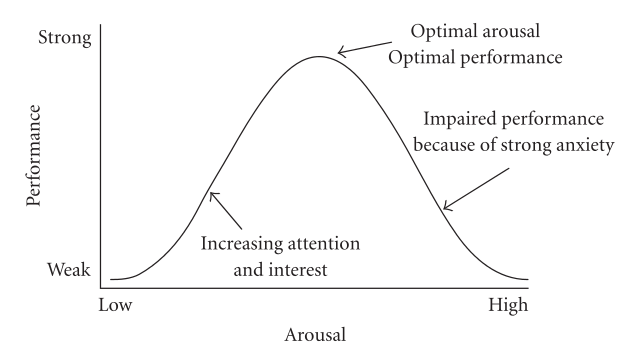Anxiety as normal
Students who have a mindset that anxiety is a normal reaction to a test situation will:
- Be more accepting of feeling some anxiety
- Engage in positive coping such as use of self-talk, asking for help, connecting with social support
- Plan and prepare to move into the situation
Students who have a mindset that anxiety is dangerous are more likely to engage in avoidance behaviours (e.g., not ask questions, put off studying), distraction (e.g., looking around the room, watching the clock), and in the extreme try to escape the situation (e.g., speed through test questions, not attend the exam).





